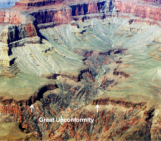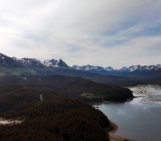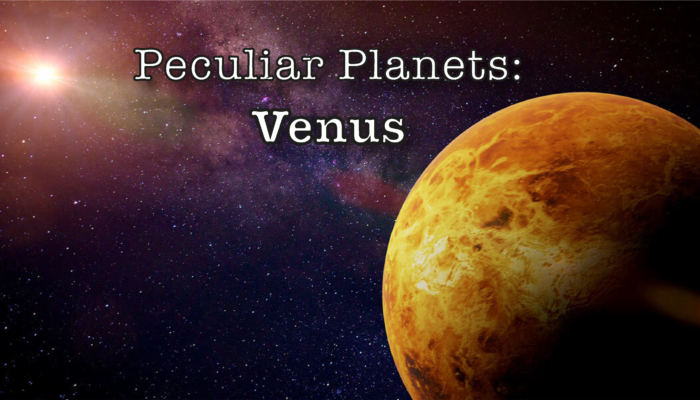
After many (attempted) visits to Venus in an earlier era of space exploration, the focus of terrestrial planet science was shifted towards e.g. our other neighbour Mars. Yet, lately, Venus seems to gain scientific popularity and not without reason – there remains so much to figure out about the puzzling planet. The virtual mini-workshop ‘Venus Science Today’ was held a few weeks ago to bring together Venus researchers and discuss the latest discoveries. In today’s blog post, PhD student Anna Gülcher (ETH Zürich) reasons why we should focus on our overshadowed sister planet, shows scientific highlights of Venus Science Today given by the event’s Organising Committee, and discusses what’s next in Venus science.
Our misunderstood twin planet
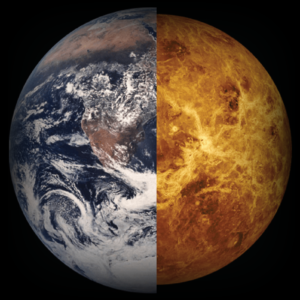
Earth (left) and Venus (right) are often called “twin planets”, yet there are remarkable differences between the planets that remain poorly understood. Source: NASA/JPL.
Venus is the second planet from the Sun, and most like Earth in terms of size, mass, and chemical makeup. But whereas Earth’s environment is hospitable to a vast array of life-forms, Venus is typically described as hellish: its crushing atmosphere holds corrosive sulfuric-acid clouds over a rocky desert surface hot enough to melt lead. Notable, Venus has no plate tectonics, a mosaic of moving plates that shapes Earth’s geology. Nevertheless, its surface is littered with various tectonic and volcanic structures. Just how these structures reflect the current state of Venus’ interior, remains in question. The randomly distributed craters on the planet and the apparent young surface age were originally ascribed as resulting from a global resurfacing event 0.5-0.7 Ga, followed by an inactive period (e.g. Turcotte, 1993; Strom et al., 1994). However, Venus’ geologic and volcanic history appears to be more controversial as recent studies indicate that it is more Earth-like than originally thought. Discoveries of geologically recent volcanism (e.g. Smrekar et al., 2010; Campbell et al., 2017; Filiberto et al., 2020; Brossier et al., 2020) and identifications of widespread active plume upwellings (Gülcher et al. 2020) reopened the debate of Venus’ puzzling interior dynamics. Moreover, very recently, a mysterious gas was identified in the atmosphere of Venus, pointing towards some unknown form of photochemistry or geochemistry, or perhaps even aerial microbial life (Greaves et al., 2020). It appears that Venus is slow to reveal its secrets. Has our sister planet been misunderstood all this time?
It appears that Venus is slow to reveal its secrets
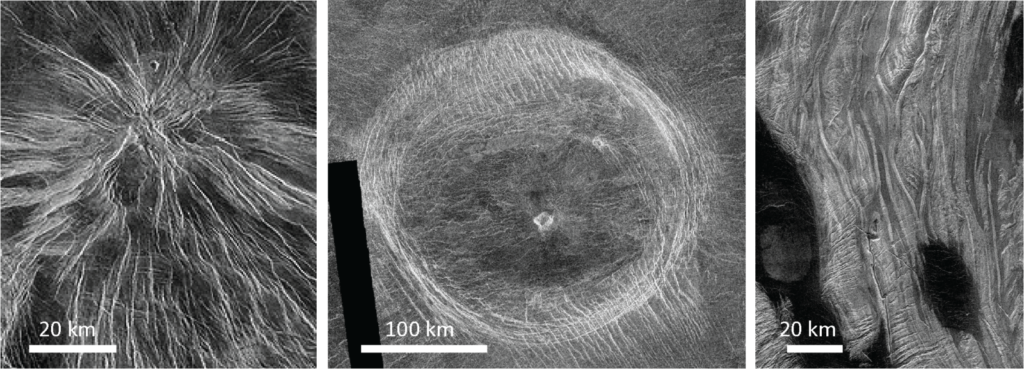
Few of the many ambiguous volcanic and/or tectonic structures on the surface of Venus. Left: Nova in Themis Regio (27.2°S, 272.9°E), middle: Thouris Corona (6.5°S, 12.9°E), right: Tessera terrain in Ovda Regio (10.6°N, 90.4°E). Click on image to enlarge. Source: NASA/JPL
Venus Science Today highlights
Venus Science Today (VST) was a 4-day event to bring Venus researchers together simultaneously across the globe for 2 hours a day. Each day consisted of 4-5 talks on research within the previous 12 months, with a mixed panel in terms of geography, gender, and career stage. Below you’ll find a daily summary, given by the VST Organising Committee: Michael J. Way (NASA Goddard Inst. for Space Studies, USA), Takehiko Satoh (Inst. of Space and Astronautical Science, Japan), Kandi Jessup (Southwest Research Inst., USA), and Cedric Gillmann (Free Univ. of Brussels).
Day 1 – Upper Atmosphere
Moa Persson (IRF, Sweden) estimated oxygen escape from the Venus Express mission and showed that it cannot account for the loss of an ocean’s worth of water (Persson et al., 2020). Exciting measurements of near-Venus plasma environment by Parker Solar Probe during its flybys 1-3 were reported by Dr. Shannon Curry (UC Berkeley, USA). Dr. Chuanfei Dong (Princeton U, USA) modelled the interaction of an Earth-size exoplanet in the habitable zone with stellar winds, revealing contrast between quickly-stripped Earth-like atmosphere and long-lasting Venus-like atmosphere cases (Dong et al., 2020). The structure of mesospheric composition was investigated by Dr. Arnaud Mahieux (Royal Belgian Inst. for Space Aeronomy), who locates the homopause at 127 km altitude.
Day 2 – Lower Atmosphere
Akatsuki science team members discussed how their mission has influenced our understanding of the mechanisms driving Venus’ atmospheric superrotation (Dr. Takeshi Horiouchi, Hokkaido Univ., Japan) and the relationships between temperature, cloud height, zonal motion, and SO2 distribution within the clouds (Minori Narita, Amherst College, USA). The bio-habitability of the clouds was discussed from the perspective of incident cosmic ray radiation by Dr. Konstantin Herbst (Univ. Kiel, Germany) (Herbst et al., 2020) and the water and nutrient influx rate required to outpace gravitational settling by Dr. Diana Gentry (NASA Ames). Dr. Carver Bierson (Arizona State Univ., USA) discussed the incompatibility of the observed rate of SO2-loss as compared to the rate predicted by chemical models on sulfuric acid cloud formation (Bierson et al., 2020). As such, Bierson pointed out that there is an aspect of Venus’ sulfur cycle that has yet to be identified.
Day 3 – Surface
Dr. Martha Gilmore (Wesleyan Univ., USA) showed how surface emissivity measurements seem to indicate relatively recent lava flows on Venus’ surface at multiple locations (Brossier et al., 2020). Dr. Paul Byrne (NC State, USA) teased us with the idea, among many, that large igneous provinces may be part of the tessera terrane (Byrne et al., 2020), while showing some impressive images of (possible?) Earth analogues to tesserae. “There is some weirdo looking stuff there”, and we should go and see it for ourselves! Dr. Richard Ernst (Carleton U, Canada; Tomsk State Univ., Russia) showed what appears to be indications of long-ago water erosion in the tesserae (Khawja et al., in press). Finally, Tania Gaspar Patarroyo (CICESE, Mexico) discussed the link between volcanic fields and tectonic features on Venus.
There’s some weirdo looking stuff there. Let’s go and figure it out!
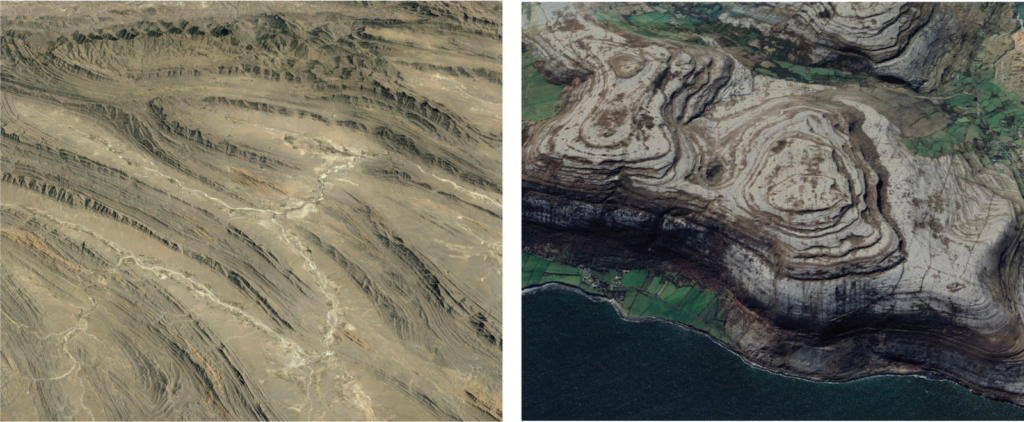
Left: Periclines (double folds) in the Sulaiman Mountains in Pakistan, formed when rocks are squeezed first in one direction, and then another, perpendicular direction. Importantly, these folds have been substantially eroded to form these distinctive patterns; a similar process may have contributed to shape Venus’ tesserae. Right: layers of limestone in the Burren, Co. Clare, Ireland. Although these sedimentary layers are essentially flat-lying, they create complex outcrop patterns when seen from above because of the effects of erosion. Click on image to enlarge. Source: dr. Paul Byrne
Day 4 – Interior
Can we judge a book by its cover? Maybe, according to Dr. Matthew Weller (Brown Univ., USA), who provided models of Venus mantle evolution in order to estimate its likely mode of convection. He suggests that prior to 0.5-1 Ga, the mantle probably experienced mobile lid, before transitioning into a stagnant lid. Anna Gülcher (ETH Zürich) presented recently published work on coronae as the result of plume-lithosphere interactions and identified corona structures that are possibly active today (Gülcher et al., 2020). Grant Euen (Virginia Tech, USA) followed up on this work by comparing the suggested plume distribution in the mantle of Venus to spherical harmonics patterns. Dr. Masaki Ogawa (Univ. of Tokyo at Komaba, Japan) presented a model of a two-stage Venus evolution, with first episodic activity with the recycling of crust and heat-producing elements, leading to the possible formation of tesserae, followed by the current stagnant lid stage (Ogawa & Yanagisawa, 2014). Finally, Dr. Joseph O’Rourke (Arizona State U, USA) suggested that Venus’ mantle could still possess a basal magma ocean due to the slower cooling of the planet, compared to the Earth (O’Rourke, 2020).
What’s next?
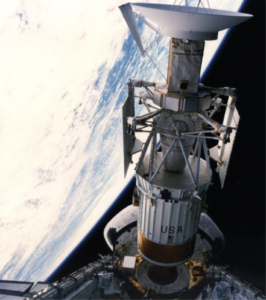
The Magellan mission was launched in 1989. Amongst other datasets, the orbiter mapped 98 percent of Venus’ surface using synthetic aperture radar. Source: NASA/JPL
Existing data from previous (e.g. Venera, Pioneer Venus, Vega, Magellan, Venus Express) and/or current (Akatsuki) missions remain highly valued and provided a broad range of compelling science. Yet, the last detailed geodynamic study of Venus’ surface took place over 26 years ago with NASA’s Magellan mission, and is hence outdated. Moreover, this data is limited in terms of resolution. For example, the Magellan topography dataset has a horizontal resolution of 10-25 km and a nominal vertical resolution of 80 m. Such a resolution precludes any detailed analysis of topographic structures on the Venusian surface and comparing with possible Earth analogues.
As the VST Committee also emphasized to me, it is clear that there are tremendous gaps in our knowledge that can only be fulfilled with new investigations of our sister world. Did Venus have a past epoch of habitability? If it was habitable, was it a catastrophic event or a drawn-out process that transformed it into a hot-house world? How have Earth and Venus diverged down such different geologic paths? And what are the physical mechanisms responsible for Venus’ geologic activity? Answers to these questions may advance our understanding of Venus’ inter-connected geophysical system, and what makes rocky planets habitable and, ultimately, emerge with life. Only new missions to Venus can help us address these questions, which are only a glimpse of all possible Venus scientific avenues. It’s time for Venus science, today!
It is clear that there are tremendous gaps in our knowledge that can only be fulfilled with new investigations of our sister world
Women in Venus science
Finally, on a more personal note, I’d like to mention that it is encouraging to have various female scientists pioneering in the Venus scientific community for several decades, and to see multiple rising new stars today. They serve as important inspirations for young female scientists like myself. To highlight, most of the key papers on Venusian coronae that I read during my study were female-led. Venus and female… Coincidence? I leave that up to you.
References Turcotte, D.L., (1993). An episodic hypothesis for Venusian tectonics. J. Geophys. Res., 98, 17061-17068 Strom, R.G., et al., (1994). The global resurfacing of Venus. J. Geophys. Res., 99, 10899–10926 Smrekar, S.E., et al., (2010). Recent hotspot volcanism on Venus from VIRTIS emissivity data. Science, 328, 605–608 Campbell, B.A., et al., (2017). Pyroclastic flow deposits on Venus as indicators of renewed magmatic activity. J.Geophys. Res., 122, 1580-1596 Filiberto, J., et al., (2020). Present-day volcanism on Venus as evidenced from weathering rates of olivine. Sci. Adv., 6, eaax7445 Brossier, J.F., et al., (2020). Low raar emmisivity signatures on Venus volcanoes and coronae: New insights on relative composition and age. Icarus, 343 Gülcher, A.J.P., et al., (2020). Corona structures driven by plume-lithosphere interactions and evidence for ongoing plume activity on Venus. Nat. Geosc., 13, 547–554 Persson, M., et al., (2020). The Venusian atmospheric oxygen ion escape: Extrapolation to the Early Solar System. J. Geophys. Res: Planets, 125 Dong, M., et al., (2020). Atmospheric Escape From TOI-700d: Venus versus Earth Analogs. Astrophys. J. Let., 896, L24 Herbst, K., et al., (2020). Revisiting the cosmic-ray induced Venusian radiation dose in the context of habitability. Astronomy & Astrophysics, 12, A15 Bierson, C. J. & Zhang, X., (2020). Chemical cycling in the Venusian atmosphere: a full photochemical model from the surface to 110 km. J. Geophys. Res: Planets, 125(7) Byrne, P.K., et al., (2020). Venus tesserea feature layered, folded, and eroded rocks. Geology, 49 Khawja, S. et al., (in press). Tesserae on Venus may preserve evidence of fluvial erosion. Accepted for publication in Nature Commm. Ogawa, M. & Yanagisawa, T., (2014). Mantle evolution in Venus due to magmatism and phase transitions: From punctuated layered convection to whole-mantle convection. J. Geophys. Res: Planets, 119, 867-883 O'Rourke, J.G., (2020). Venus: a thick basal magma ocean may exist today. Geophys. Res. Let., 47(4)

